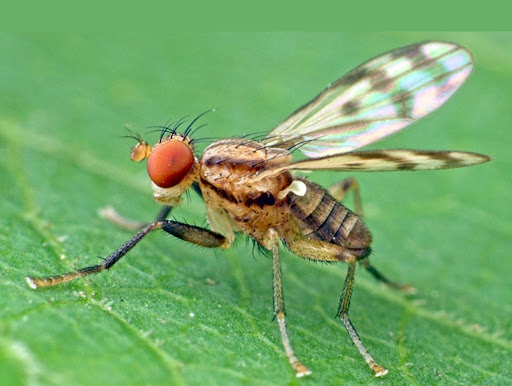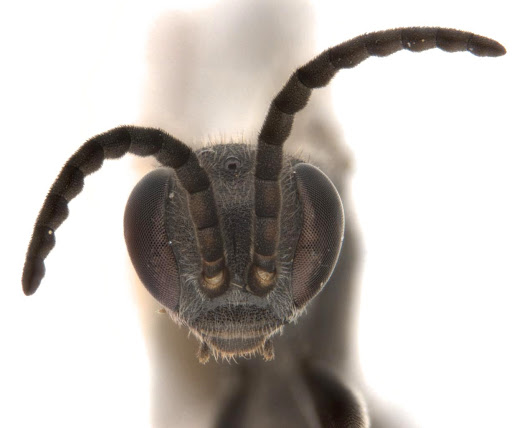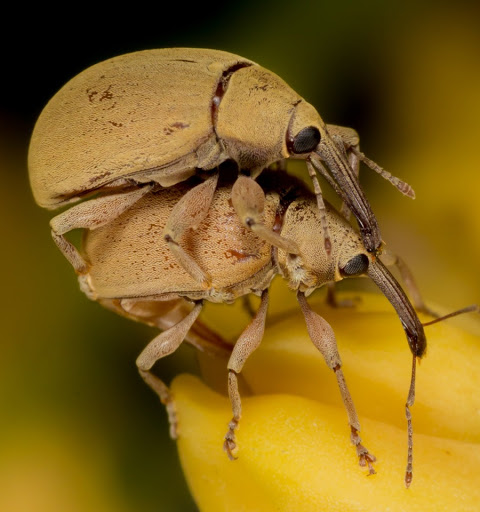[Most Recent Entries] [Calendar View]
Monday, August 31st, 2020
| Time | Event | ||
| 3:20a | [Entomology • 2020] Biology, Immature Stages, and Systematics of Snail-killing Flies of the Genus Colobaea (Diptera: Sciomyzidae), with Overviews of Aspects of the Tribe Sciomyzini
Abstract All reared larvae of flies of the genus Colobaea Zetterstedt, 1837 (Diptera: Sciomyzidae), which comprises 15 valid species, kill and consume freshwater nonoperculate pulmonate snails. New data are presented on the geographic distribution, biology, morphology of immature stages, and classification of Colobaea. Life cycle information is provided from field data and laboratory rearings for four of the 11 Palearctic species—C. bifasciella (Fallén), C. deemingi Knutson & Bratt n.sp., C. pectoralis (Zetterstedt), and C. punctata (Lundbeck)—and for one of the three Nearctic species, C. americana Steyskal. Colobaea bifasciella is shown to be one of the most highly specialized parasitoid Sciomyzini, laying eggs on shells of Galba truncatula (O.F. Müller) and Stagnicola palustris (O.F. Müller) in temporary, intermittent, or vernal semiterrestrial situations. Each larva feeds in only one host snail, which is not killed until shortly before the larva completes development. Puparia are strongly modified to fit tightly within the shell of the host. The other reared species are shown to be less specialized than C. bifasciella, with eggs being laid upon vegetation, the larvae behaving as parasitoids-predators-saprophages of exposed aquatic snails, and the puparia of all four species being adapted to a lesser degree than C. bifasciella to fitting within the shell of the host snail. In nature, C. americana attacks Gyraulus parvus (Say) and Physa Draparnaud sp.; C. pectoralis attacks Anisus vortex (L.) and Bathyomphalus contortus (L.); and C. punctata attacks Gyraulus albus O.F. Müller, Lymnaea “peregra,” Planorbarius corneus (L.), and Planorbis planorbis (L.). In the laboratory, these species also attacked and consumed other freshwater nonoperculate snails; C. deemingi was reared on Gyraulus intermixtus (Mousson) and Radix gedrosiana (Say), and an adult fly of the Palearctic C. distincta (Meigen) emerged from a puparium found in the shell of Anisus spirorbis (L.) collected in nature. Described and figured are eggs, larvae of all three instars, and puparia of the five laboratory-reared species. To provide perspective on features of Colobaea, diagnostic features are summarized of the immature stages of the Sciomyzini and the suprageneric categories of Sciomyzidae. The biogeography of the tribe Sciomyzini is presented, along with details of known geographical distribution. The classification and phylogenetic position of Colobaea are discussed. Included are a checklist of all known taxa of Colobaea, maps of geographic distribution, and a key to adults of the 15 valid species. Keywords: Diptera, Acalyptratae, Sciomyzoidea, snails, life cycles, morphology, immature stages, taxonomy, nomenclature, phylogenetic relationships  Albertus D. Bratt, Lloyd V. Knutson, William L. Murphy and Anthony A. Daniels. 2020. Biology, Immature Stages, and Systematics of Snail-killing Flies of the Genus Colobaea (Diptera: Sciomyzidae), with Overviews of Aspects of the Tribe Sciomyzini. Zootaxa. 4840(1); 1–64. DOI: 10.11646/zootaxa.4840.1.1 | ||
| 9:02a | [Entomology • 2020] Three New Species of Epipompilus Kohl (Hymenoptera, Pompilidae, Pepsinae) from Australia
Abstract Three new species are added to the genus Epipompilus (Hymenoptera: Pompilidae) in Australia. Epipompilus mirabundus sp. nov., E. taree sp. nov., and E. namadgi sp. nov. are described and illustrated. A key to males of Epipompilus is provided. A novel association of Epipompilus and Sceliphron formosum (Hymenoptera: Sphecidae) is also documented. The larva of E. mirabundus sp. nov. was found sharing single nest cell with a Sceliphron larva; this association could be the result of a parasitised spider being brought back to the nest by the Sceliphron adult. Keywords: Hymenoptera, Spider wasps, mud dauber wasps, Epipompilus, Sceliphron formosum Epipompilus mirabundus Yuan & Rodriguez, sp. nov. Distribution. Australia: Australian Capital Territory. Etymology. The epithet originates from the Latin mirabundus, which means astonishment, and is based on the unusual way the specimen was found in its larval stage developing and sharing a cell with a Sceliphron formosum larva. Remarks. The cocoon was found in the nest of Sceliphron formosum (Hymenoptera: Sphecidae) (Figs. 1D, 3). A male adult was reared and emerged in the lab. Epipompilus taree Yuan & Rodriguez, sp. nov. Distribution. Australia: New South Wales. Etymology. The epithet, placed as a noun in apposition, comes from the city close to where the specimens were collected. Epipompilus namadgi Yuan & Rodriguez, sp. nov. Distribution. Australia: Australian Capital Territory. Etymology. The epithet, placed as a noun in apposition, comes from the National Park where the type specimen was collected. David Yuan and Juanita Rodriguez. 2020. Three New Species of Epipompilus Kohl (Hymenoptera, Pompilidae, Pepsinae) from Australia. Zootaxa. 4743(4); 575–584. DOI: 10.11646/zootaxa.4743.4.7 @puppyyuan #spiderwasp @BushBlitz2 #australianbushfires #namadgi | ||
| 3:27p | [Entomology • 2020] Systematic Revision and Morphological Phylogenetic Analysis of Anchylorhynchus Schoenherr, 1836 (Coleoptera, Curculionidae: Derelomini) Abstract Anchylorhynchus Schoenherr is a genus of palm-associated weevils currently including 22 described species in the Neotropics. These weevils engage in brood pollination interactions with species in at least four genera of palms (Arecaceae), representing an emerging system for the study of mutualisms. Here we revise the taxonomy of Anchylorhynchus and propose the first phylogenetic hypothesis for the group, based on morphology. Anchylorhynchus chrysomeloides sp. nov., Anchylorhynchus goiano sp. nov., Anchylorhynchus imitator sp. nov., Anchylorhynchus latipes sp. nov., Anchylorhynchus multisquamis sp. nov. and Anchylorhynchus rectus sp. nov. are described, Anchylorhynchus gottsbergerorum Vanin is a new junior subjective synonym of Anchylorhynchus bicarinatus O’Brien, and Anchylorhynchus eriospathae Bondar and Anchylorhynchus pictipennis Hustache are new junior subjective synonyms of Anchylorhynchus tremolerasi Hustache, resulting in 25 valid species for the genus. We provide genus and species descriptions with a new dichotomous key to the species and updated information on geography and host associations based on museum records and extensive new collections. We also produce a new morphological matrix with 113 characters, 11 of them based on measurements while accounting for allometry, correlation and power to delimit groups. The software pipeline to produce these characters was encoded in a graphical user interface named DiscretzR, made available here. Analysis of this matrix under parsimony and Bayesian inference resulted in strong support for the monophyly of Anchylorhynchus, but weaker support for most clades within the genus. Reconstruction of the host plant associations indicates that the common ancestor of Anchylorhynchus visited flowers of Syagrus Mart., with later transitions to other genera restricted to one of the major clades of Anchylorhynchus. This taxonomic revision with the first phylogeny for the group provides a foundation for future evolutionary studies in the genus. Keywords: Coleoptera, systematics, morphology, taxonomic revision, Coleoptera, Curculionidae, Arecaceae, Syagrus, Butia, Oenocarpus, Euterpe Bruno A. S. de Medeiros and Sergio A. Vanin. 2020. Systematic Revision and Morphological Phylogenetic Analysis of Anchylorhynchus Schoenherr, 1836 (Coleoptera, Curculionidae: Derelomini). Zootaxa. 4839(1); 1-98. DOI: 10.11646/zootaxa.4839.1.1 |
| << Previous Day |
2020/08/31 [Calendar] |
Next Day >> |











